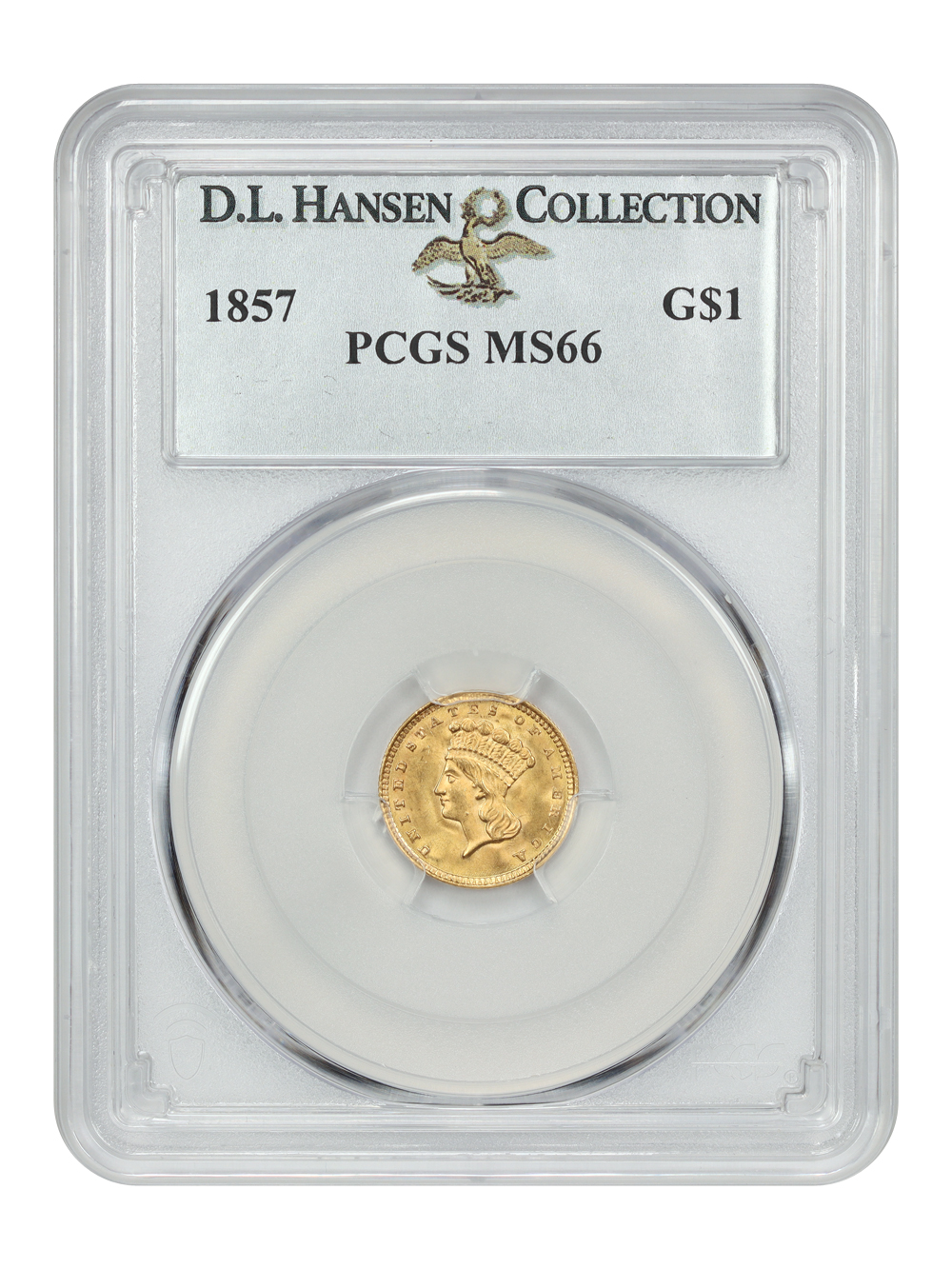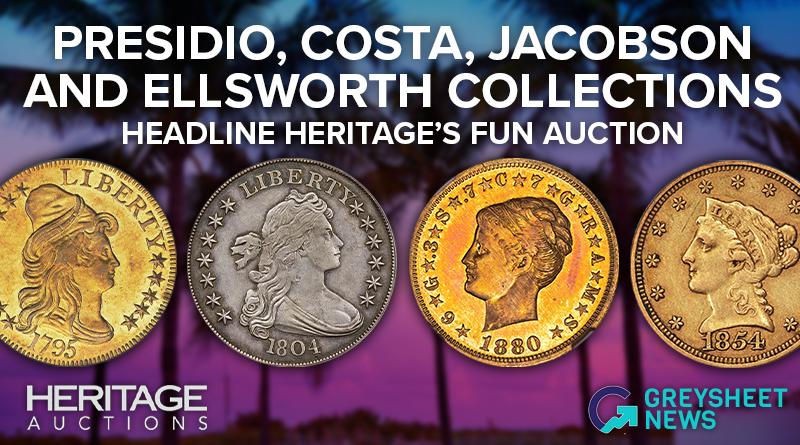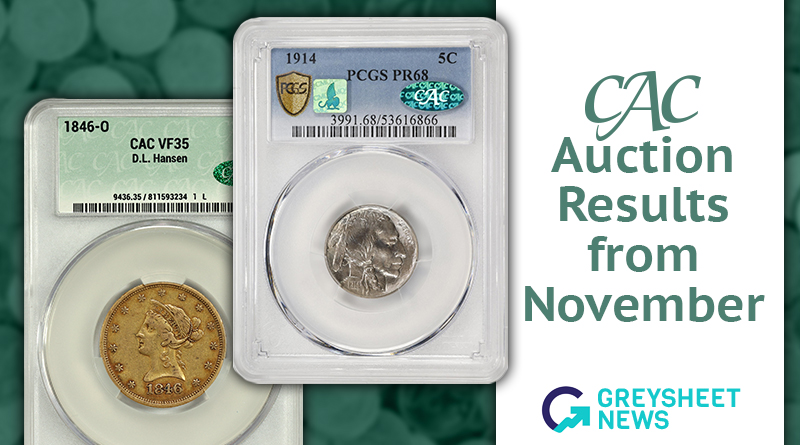1933 $20 MS
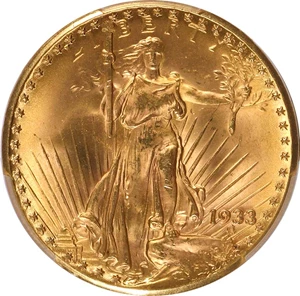
Source: GreatCollections

1933 $20 Saint Gaudens
Source: Smithsonian NNC

1933 $20 Saint Gaudens
Source: Smithsonian NNC
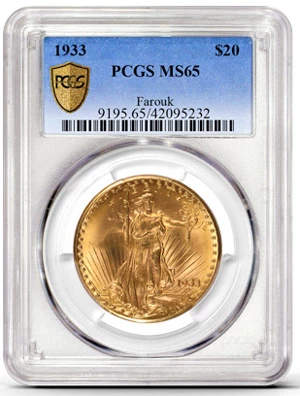
1933 $20 PCGS MS65
Source: GreatCollections
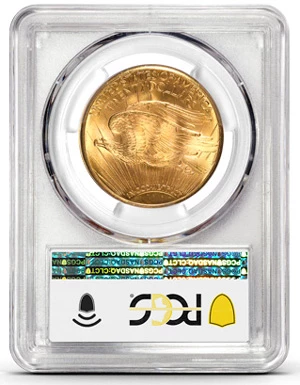
1933 $20 PCGS MS65
Source: GreatCollections





Greysheet Catalog Details (GSID: 10155)
The legendary 1933 Saint-Gaudens double eagle is arguably the most elusive in the entire arena of United States numismatics. Yet, it was not intended to be. In fact, some 445,500 were struck before Executive Order 6102 was handed down from President Franklin Delano Roosevelt, forbidding the hoarding of gold coins, gold bullion, and gold certificates within the continental United States. This spelled the end of circulating United States gold coinage and the melting of millions upon millions of now-classic gold coins, including virtually all 1933 Saint-Gaudens double eagles.
Of course, as many numismatists know, a few 1933 Saint-Gaudens gold coins reached private hands before Executive Order 6102 really took effect. The order caused all 1933-minted gold coins to be destroyed and, thus, all 1933 Saint-Gaudens double eagles. Yet, one wound up in the hands of Egypt's King Farouk. Another found its way into the famous U.S. coin collector Louis E. Eliasberg's collection -- he voluntarily returned it when he learned of its illegal status. And decades ago, a Philadelphia coin dealer named Israel Switt got a hold of at least 10 -- the number that his family was ordered to return to the United States government in 2012 without compensation.
Not counting the two specimens in the U.S. National Numismatic Collection at the Smithsonian, others may exist. However, they either have yet to be uncovered or their current holders choose not to disclose that they have them, for fear of having to give them up without compensation, as happened to Switt's descendants. The Farouk specimen was given special consideration by the United States government because the king's ministers had legally applied to purchase the coin through an export license that was approved by the U.S. government. The U.S. government pursued King Farouk's 1933 Saint for years, but the coin eventually disappeared after the king was deposed in a 1952 coup.
More than 40 years later, the coin turned up after U.S. Secret Service agents arrested Brit ish coin dealer Stephen Fenton at the Waldorf-Astoria Hotel in New York. He testified that the coin hailed from King Farouk's coin collection, and his charges were later dropped. The United States government decided to settle the matter by granting that specific specimen legal-tender status through an issue-and-monetize order. During the time that the coin was being litigated, it was kept in the Treasury vaults of the World Trade Center in New York City. After the legal settlement, the coin was transferred to Fort Knox in July 2001 -- just two months before the World Trade Center was destroyed in the 9/11 terrorist attacks.
The 1933 Saint-Gaudens double eagle finally hit the auction block on July 30, 2002, selling for a total of $7,590,020 -- with 50% of the bid going to Fenton, 50% disbursed to the United States Treasury, and an additional $20 to complete the issue-and-monetize order giving the coin its legal tender status. The sale of the 1933 Saint-Gaudens broke the record for the most-expensive coin ever sold, nearly doubling the previous record held by a PCGS PR68 Class I 1804 Draped Bust dollar that realized $4,140,000 in a 1999 auction. The same coin sold again at Sotheby's in 2021 for $18 million.
Obverse: Liberty is portrayed standing on a rock, holding a torch in her right hand and an olive branch in her left. The word LIBERTY appears on the top periphery surrounded by stars. The date is stamped on the right side of the coin, just above the rock.
Reverse: A crescent sun appears at the bottom as if rising on the horizon with long rays extending to the top of the coin. A flying eagle covers the central portion, atop the rays. The words UNITED STATES oF AMERICA, TWENTY DOLLARS appear on the top periphery.
Catalog Detail
Greysheet & CPG® PRICE GUIDE
From the Greysheet Marketplace
Buy Now: $14,106.25
Buy Now: $160,000.00
Buy Now: $154,000.00
Buy Now: $5,110.63
Buy Now: $50,111.88
Buy Now: $220,000.00
Buy Now: $763.13
Buy Now: $6,450.00
Buy Now: $39,636.25
Buy Now: $58,320.00
Related Stories (powered by Greysheet News)
View all newsAbout CDN Prices
All CDN prices are based on proprietary market knowledge and technology developed by CDN Publishing, LLC.
CPG® prices represent retail levels. Collectors should refer to CPG values as a starting place for their negotiations, or auction bid reference.
Greysheet/Greensheet prices are wholesale market levels for collectible coins/paper money intended to indicate what a dealer, or wholesale, buyer would pay for the described item in the specified grade. Greysheet/Greensheet represent "sight-seen" values based on a buyer's in-hand review. The actual value can be more or less than this depending on factors including eye appeal and market timing.
Bluesheet (NGC & PCGS) prices represent the highest sight-unseen offers to buy on dealer networks like CDN Exchange. In many cases, there are no active sight-unseen buy offers, so CDN looks to the recent lowest market values for such an item. For this reason, Bluesheet values typically represent the floor of the market for the specified item. CDN only tracks Bluesheet on certain items.
CAC prices are for U.S. coins that meet the standards of the Certified Acceptance Corporation. You can learn more about CAC on their web site.
Price movement is indicated for price changes in the last 30 days.
The prices listed in our database are intended to be used as an indication only. Users are strongly encouraged to seek multiple sources of pricing before making a final determination of value. CDN Publishing is not responsible for typographical or database-related errors. Your use of this site indicates full acceptance of these terms.


 Dealers Only
Dealers Only







